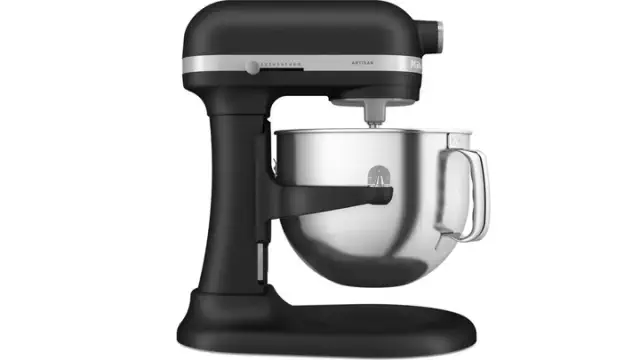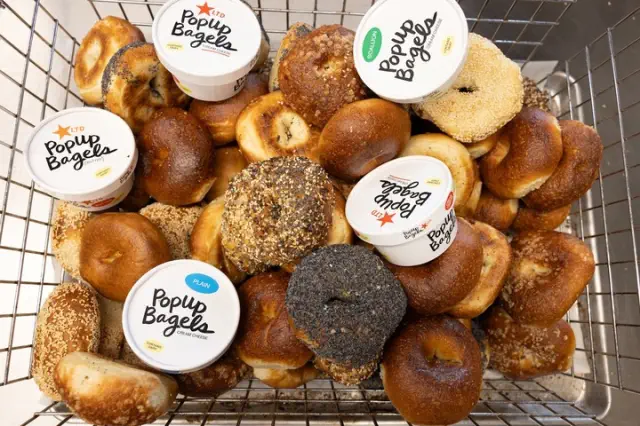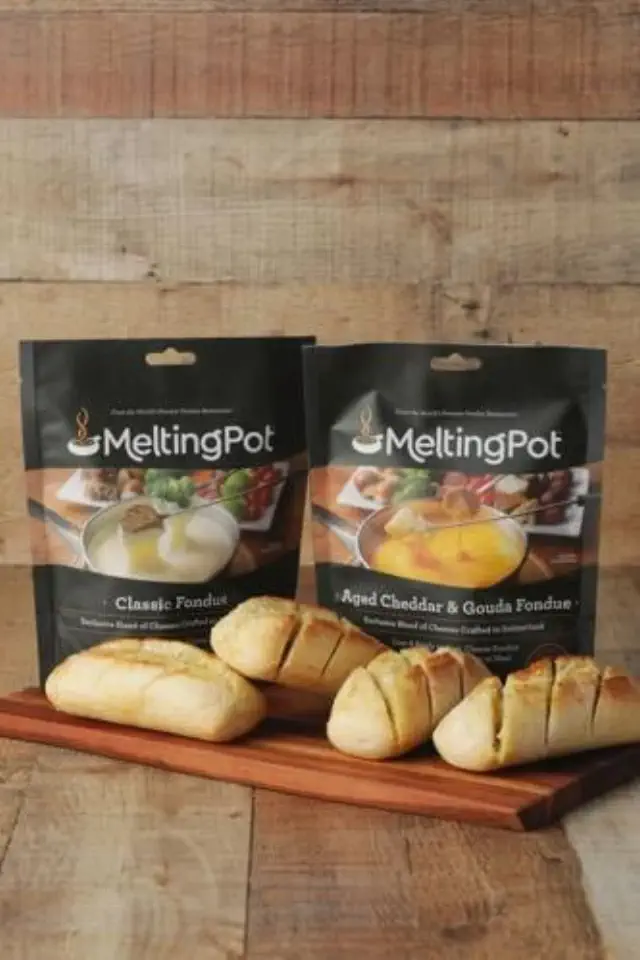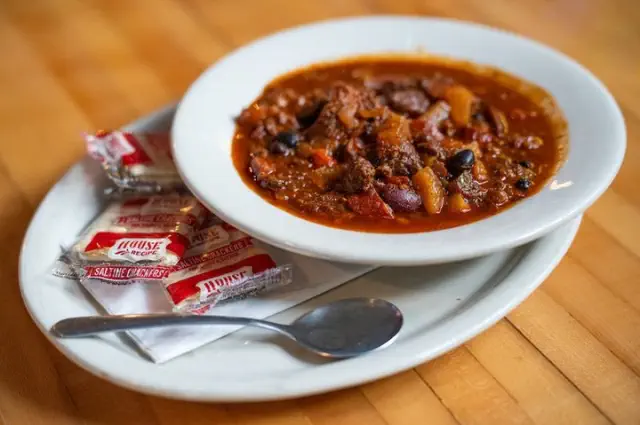Absolutely, it's a KitchenAid!
I often find myself wondering what tools and gadgets are found in the kitchens of top professionals. It stands to reason that the most skilled bakers in the nation would have access to the finest appliances, right? I know many of you share this intrigue, as you've been inquiring about the stand mixers favored by professional bakers. Well, I’ve done some digging and uncovered the answer. You probably won’t be shocked by what I discovered.
KitchenAid have been making stand mixers for over a hundred years, so to say they have some experience in the world of baking is understating their expertise. You'll already know them for the tilt-head Artisan stand mixers that top lists of the best stand mixers across the board, but if you dig into their collection, you'll find some serious pieces of kit.
Melissa Jackson, a skilled Artisan Baker, shared with me, "The first indication that a stand mixer is designed for professional use is when it's a bowl-lift model. This type features a more robust base and a solid construction, enabling it to tackle tough doughs with ease." After extensive research, it became clear that Melissa and the other bakers I spoke with reached a consensus. The KitchenAid Artisan 6.6-litre Bowl Lift Stand Mixer is essential for any serious or aspiring baker's kitchen. Naturally, I had to put it to the test myself.
Specifications
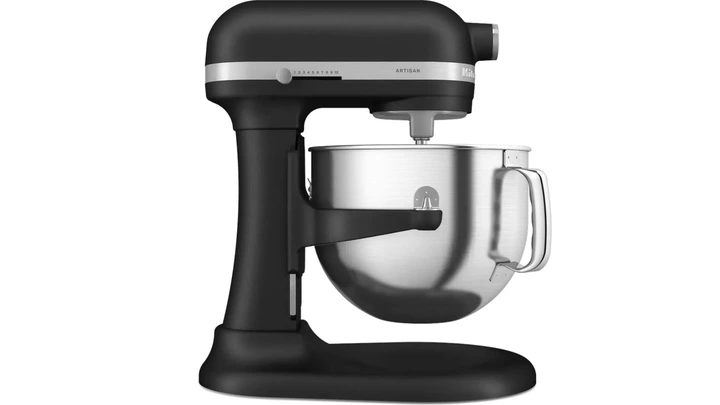
View pictures in App save up to 80% data.
| Dimensions | 49.2 x 43.2 x 33.4 cm |
| Weight | 15.7 kgs |
| Speeds | 0-10 (including 1/2 speeds) |
| Accessories | Whisk, dough hook, k-beater, flex-edge k-beater |
| Bowl capacity | 6.6-litres |
| Materials | Stainless steel bowl |
| Power | 375 watts |
| Guarentee | 5 years (with 15 years reparability) |
Unpacking
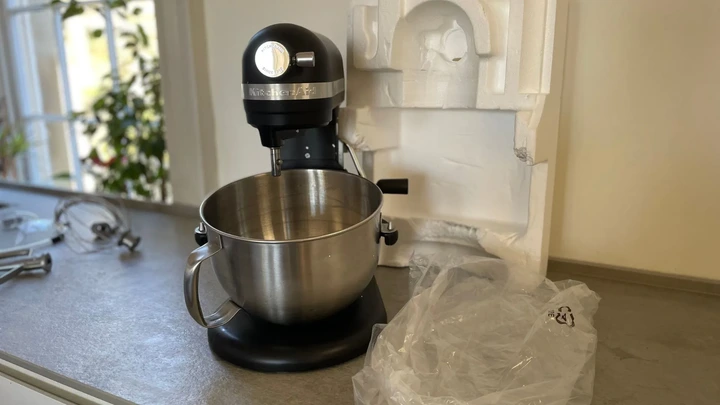
View pictures in App save up to 80% data.
I'm a big fan of KitchenAid stand mixers. What I appreciate the most is when they come in perfect condition, which makes me overlook the packaging of the Artisan model. It includes quite a bit of polystyrene surrounding the bowl and the mixer itself, which means you'll need to dispose of it in the main trash bins. It's not the most convenient, but the quality of the mixer makes it all worthwhile.
This stand mixer includes a splash guard, whisk, K-beater, flex-edge beater, and dough hook. Unlike standard KitchenAid models, which often lack the flex-edge beater and splash guard, this model is clearly tailored for passionate bakers. Additionally, all components are made from stainless steel with a silver coating, giving the stand mixer a robust and professional appearance. It's easy to see why it's favored by bakers.
Who would find it suitable?
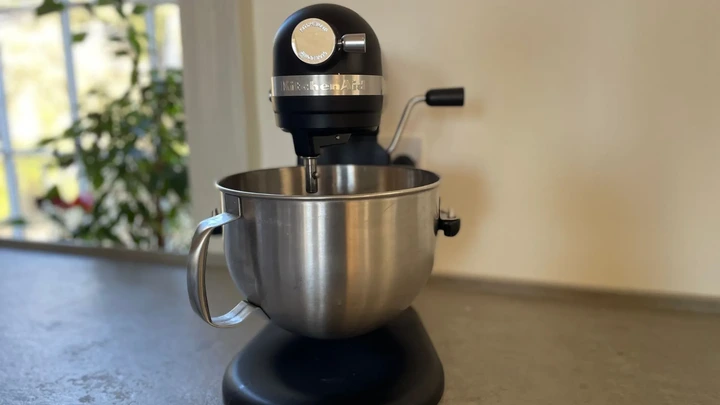
View pictures in App save up to 80% data.
If you’ve been pointed in the direction of the Artisan 6.6-litre stand mixer, it’s clear that this appliance is meant for serious bakers. As the largest and most powerful option from the brand, it barely qualifies as a domestic model — you'll be able to whip up an impressive quantity of cupcakes and bread dough with ease. To put it into perspective, KitchenAid claims you can prepare enough dough for 14 pizzas, bake 40 cupcakes, and create 48 cookies in this machine. You might find yourself throwing gatherings just to share all the delicious treats you can create!
Melissa Jackson, a qualified artisan baker, shared her thoughts on the KitchenAid stand mixer, saying, "This mixer is incredibly powerful, offering 1.5 times the strength of other KitchenAid models. Despite the heavy usage, it rarely overheats, which is a huge plus for me. The materials used in its construction are far more durable, and that’s one of the main reasons I chose it. Even the attachments are sturdier compared to other mixers I've tried. Given how frequently I bake and the intensity of my baking sessions, it truly feels like a wise investment."
There are various subtle features that might attract more experienced chefs, while novice bakers may prefer to bypass them to save a significant amount of money. One standout feature is the half-speed setting, designed to replicate the technique of hand folding. This is an uncommon and recent innovation in stand mixers, and I personally welcome its introduction. Additionally, the mixer has a heavier base, which is one of the factors that led Melissa to choose it for her kitchen. She mentions that "it remains stable, unlike tilt-head mixers, when I'm preparing my doughs, and it effectively develops the gluten."
What is the experience like when using it?
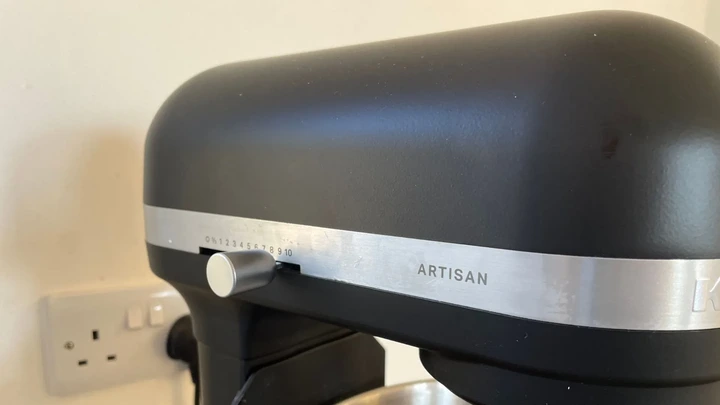
View pictures in App save up to 80% data.
Here are two key points to understand about the KitchenAid Artisan 6.6-litre Bowl Lift Stand Mixer (and yes, the name is quite a handful). Firstly, this model utilizes a bowl-lift mechanism, which involves using a lever to elevate or lower the bowl instead of tilting the mixer head. This design gives the mixer a sturdier feel. Additionally, the base is typically broader and heavier, ensuring stability when dealing with denser doughs and mixtures. It's easy to see why this mixer is favored by professional bakers.
Another important aspect to understand when using this appliance is the various speed settings available. Typically, tilt-head stand mixers operate in increments of one or two for speed adjustments. Take the classic model, for instance, which features speeds of 0, 1, 2, 4, 6, 8, and 10. These settings are generally sufficient for most baking tasks. However, if you're looking to incorporate slow mix-ins and pay close attention to the subtleties of your cooking, you might prefer a model that offers half-speed options and allows for precise adjustments in single increments, like this one.
Let me share some details about the unique half speed setting, which is a distinctive feature of KitchenAid appliances. The brand doesn't often innovate, making this addition quite remarkable. I've used it to incorporate blueberries into muffin batters and to gently fold whipped egg whites into soufflés. This half speed setting is exceptionally smooth and reliable. Moreover, it provides a gradual, gentle start, preventing your mixing bowl from scattering flour and other ingredients across your countertop.
Test 1: pastry
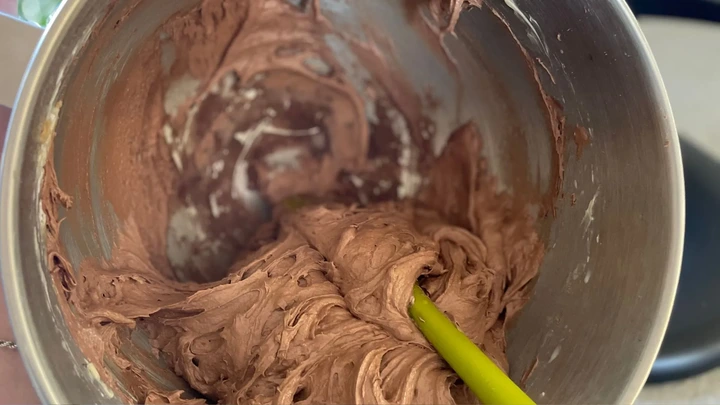
View pictures in App save up to 80% data.
My go-to test for evaluating stand mixers is baking a chocolate cake. I stuck to my standard method, using the k-beater to combine the butter and sugar. To my surprise, I managed to whip it up in just about a minute, despite the butter being a bit colder than ideal. Next, I incorporated the flour, cocoa powder, eggs, baking powder, and vanilla. I began mixing on medium speed, curious if the flour would cloud the air, but everything remained settled at the bottom of the bowl. That’s quite impressive!
I ramped up the speed, and everything remained organized. In just a few minutes, the batter came together beautifully. During my initial attempt, I observed that some of the mixture at the bottom of the bowl had nearly adhered and hadn't fully blended with the rest. This didn't catch me off guard, as it seemed the k-beater wasn't making contact with the bottom.

View pictures in App save up to 80% data.
After doing some research, I discovered that this issue isn't a flaw with the KitchenAid itself; rather, it's a common misconception among many users. The back of the bowl can be manually adjusted up and down, and it's essential to position it correctly for your mixture. This flexibility is important since a 6.6-liter bowl can be filled to the top or nearly empty in a home kitchen. I'll share a video that demonstrates how to make this adjustment, in case you find yourself in the same situation.
Once I resolved the adjustment problem, I quickly made some blueberry cupcakes, naturally utilizing my half-speed folding option. In addition to that, I prepared brownies, additional chocolate cake, and cookie doughs, followed by even more chocolate cake. While I still lean towards the traditional k-beater for most of my mixing tasks—likely due to familiarity—the flexible edge k-beater did a great job at ensuring the bowl's sides stayed clean, albeit it feels a bit less sturdy. I would definitely use it for my cupcake mixtures, but I wouldn't trust it with my cookie doughs.
Test 2: loaf
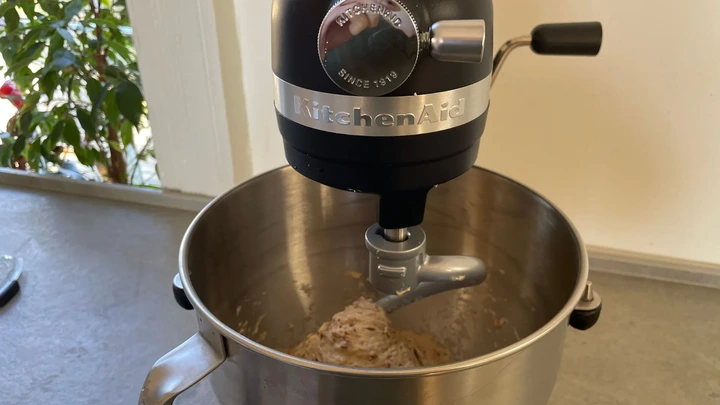
View pictures in App save up to 80% data.
I came to this off the back of the bread-specialist stand mixer, the Ankasarum. I'll compare these two further down the article, but just know, this had some big boots (or should I say loaf tins?) to fill.
I prepared my signature brown bread dough in this mixer. To start, I used 500g of flour to create a family-sized loaf. The brown flour tends to be denser than white flour, making it a great way to assess the strength of the stand mixer. As anticipated, it transformed into a smooth, elastic dough in just six minutes. Being somewhat skeptical, I removed the dough from the bowl and spent some time kneading it by hand, and I was pleasantly surprised by how pliable it was. The gluten developed beautifully. The true test came during baking, resulting in a wonderfully light and well-risen loaf.
It all seemed straightforward, so I decided to double the recipe and prepared enough dough for two loaves. I lowered the bowl (thanks to my new trick) and allowed the machine to knead for eight minutes. The KitchenAid, as reliable as ever, produced another perfect ball of dough. It effortlessly released from the bowl's sides, and the mixer operated smoothly, showing no signs of strain while handling my hefty batch of dough.
I began utilizing this for brioche, white bread, and my regular sourdough, and it performed equally well with wetter and softer doughs, including the more delicate and sticky enriched varieties. It's truly a remarkable stand mixer that can handle a variety of tasks. This is exactly why I reach out to my baker friends for their suggestions.
Test 3: whipped topping
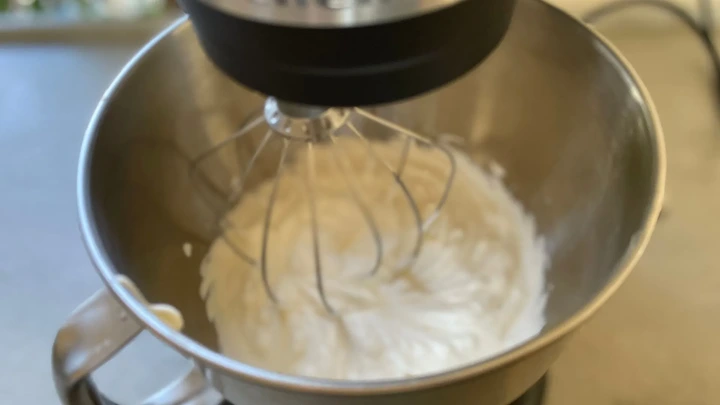
View pictures in App save up to 80% data.
After witnessing the remarkable outcomes from the cake and bread experiments, I was fairly certain that this would yield a rich, fluffy cream. The broad whisk incorporated a generous amount of air into the double cream I was experimenting with. I set it to the maximum speed (10) for one minute, and already, I noticed thick ribbons forming in the cream. Just about thirty seconds later, my large 750ml container of double cream was whipped to the brink of turning into butter. According to my calculations, that’s a nearly two-minute achievement. That's quite extraordinary, especially for such a substantial amount of cream. I admit, speed 10 may not provide the calming ambiance of classical music while cooking, but the quick results make it a minor inconvenience worth tolerating.
I also made some vegan double cream, which is often known for being slow to whip, but I achieved some fantastic results. In just three minutes, I managed to create a wonderfully creamy and thick texture.
The cream test specifically emphasized the advantages of having a handle attached to the bowl. The handle is designed to be broad, allowing for a secure grip that ensures comfort while effectively balancing the weight throughout the entire bowl.
Tidying Up
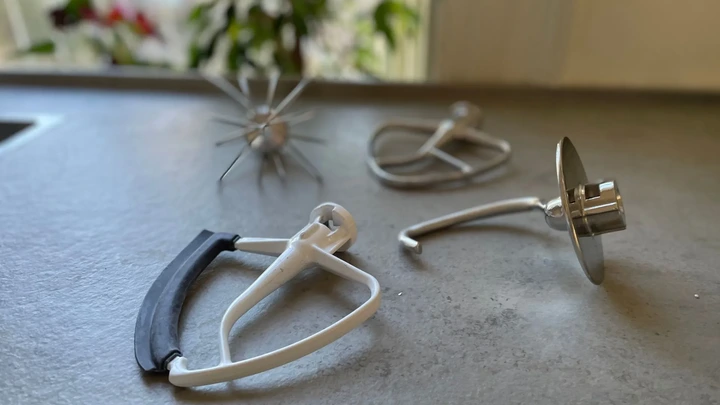
View pictures in App save up to 80% data.
The beauty of a KitchenAid is that all the accessories and bowl are dishwasher safe. Once you're done with your baking, it's nice to know that you haven't got a big task washing up ahead of you. It's a simple way to end your baking. However, I would throw in a little caution. If you want all of your accessories to stay in better condition for longer, you should wash them by hand. I use gentle washing up liquids, such as Ecover and Method, with some warm water and a gentle sponge. They do the job of keeping the stand mixer sparkling clean and I promise they'll look better.
What are the differences?

View pictures in App save up to 80% data.
I teased you earlier about the comparatively impressive stand mixers out there. If you're a serious baker and you want a sturdy stand mixer that can handle large quantities and tough doughs, the Ankasarum should be on the table.
This model features a rotating bowl instead of a rotating head, which I believe is particularly beneficial for handling thicker and tougher doughs. It boasts a more robust motor with 1,500 watts and a spacious 7-litre bowl, compared to the KitchenAid's 6.6-litre capacity. Additionally, it comes with a variety of specialized accessories tailored for specific baking tasks. While it may appear more complicated than the KitchenAid initially and could be perceived as daunting, it's worth noting that it is somewhat more specialized, which might make sourcing compatible accessories a bit more challenging. Nonetheless, it comes at a lower price point. Therefore, if you're looking for a professional-grade stand mixer without breaking the bank, this is an excellent choice.
If you believe this might be too much for your modest kitchen and basic cookbook, consider checking out some more streamlined KitchenAid models. The tilt-head Artisan Stand Mixer is not as heavy at the base, which might make it a bit less stable when tackling dense doughs. Nonetheless, for straightforward baking tasks, the Artisan stands out as an excellent option. I've yet to encounter a home baker who felt limited by their Artisan mixer. Plus, it’s more affordable and compact as well.
Is it worth purchasing?

View pictures in App save up to 80% data.
For those who take baking seriously and need a reliable, durable, and efficient stand mixer for their kitchen, your search ends here. This model is favored by professional bakers, ensuring that you can bake with confidence, knowing that your mixer won't hold you back. On the other hand, if the size and specifications seem overwhelming, the KitchenAid Artisan offers a fantastic alternative that combines performance with a more manageable footprint.
Our testing methodology

View pictures in App save up to 80% data.
Baking is a passion of mine, which results in the stand mixers we evaluate experiencing quite a bit of usage. I often leave these appliances out on my countertop for extended periods, sometimes even for months, as I utilize them to prepare cakes, knead dough for bread, and whip up creams. These are my go-to tests for every stand mixer, but I also enjoy experimenting with a variety of recipes, doughs, and vegan options to thoroughly assess the capabilities of each stand mixer.
Having tested a wide range of top stand mixers, I find myself constantly comparing their features and performance in real-time. While I typically prefer to explore various options before making a purchase, my experience can save you that hassle. I can sift through the overwhelming choices and highlight the best alternatives that I believe will enhance your mixing experience or help you save some cash.
If you want to find out more about how we test stand mixers, you can visit our dedicated page.
